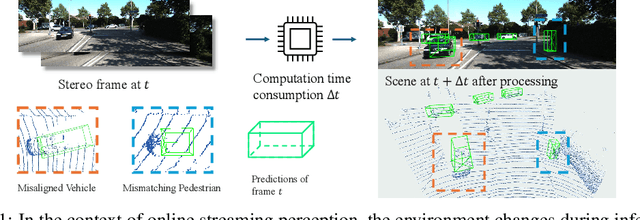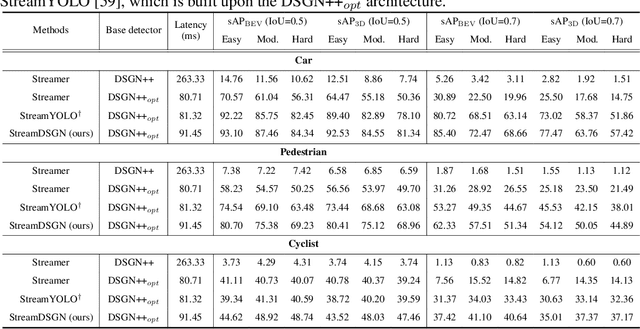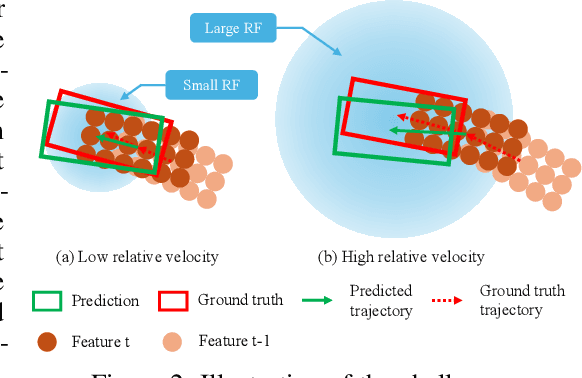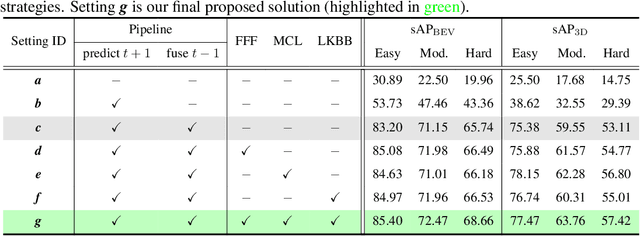Changcai Li
Real-time Stereo-based 3D Object Detection for Streaming Perception
Oct 16, 2024



Abstract:The ability to promptly respond to environmental changes is crucial for the perception system of autonomous driving. Recently, a new task called streaming perception was proposed. It jointly evaluate the latency and accuracy into a single metric for video online perception. In this work, we introduce StreamDSGN, the first real-time stereo-based 3D object detection framework designed for streaming perception. StreamDSGN is an end-to-end framework that directly predicts the 3D properties of objects in the next moment by leveraging historical information, thereby alleviating the accuracy degradation of streaming perception. Further, StreamDSGN applies three strategies to enhance the perception accuracy: (1) A feature-flow-based fusion method, which generates a pseudo-next feature at the current moment to address the misalignment issue between feature and ground truth. (2) An extra regression loss for explicit supervision of object motion consistency in consecutive frames. (3) A large kernel backbone with a large receptive field for effectively capturing long-range spatial contextual features caused by changes in object positions. Experiments on the KITTI Tracking dataset show that, compared with the strong baseline, StreamDSGN significantly improves the streaming average precision by up to 4.33%. Our code is available at https://github.com/weiyangdaren/streamDSGN-pytorch.
Accurate and Real-time Pseudo Lidar Detection: Is Stereo Neural Network Really Necessary?
Jun 28, 2022



Abstract:The proposal of Pseudo-Lidar representation has significantly narrowed the gap between visual-based and active Lidar-based 3D object detection. However, current researches exclusively focus on pushing the accuracy improvement of Pseudo-Lidar by taking the advantage of complex and time-consuming neural networks. Seldom explore the profound characteristics of Pseudo-Lidar representation to obtain the promoting opportunities. In this paper, we dive deep into the pseudo Lidar representation and argue that the performance of 3D object detection is not fully dependent on the high precision stereo depth estimation. We demonstrate that even for the unreliable depth estimation, with proper data processing and refining, it can achieve comparable 3D object detection accuracy. With this finding, we further show the possibility that utilizing fast but inaccurate stereo matching algorithms in the Pseudo-Lidar system to achieve low latency responsiveness. In the experiments, we develop a system with a less powerful stereo matching predictor and adopt the proposed refinement schemes to improve the accuracy. The evaluation on the KITTI benchmark shows that the presented system achieves competitive accuracy to the state-of-the-art approaches with only 23 ms computing, showing it is a suitable candidate for deploying to real car-hold applications.
 Add to Chrome
Add to Chrome Add to Firefox
Add to Firefox Add to Edge
Add to Edge